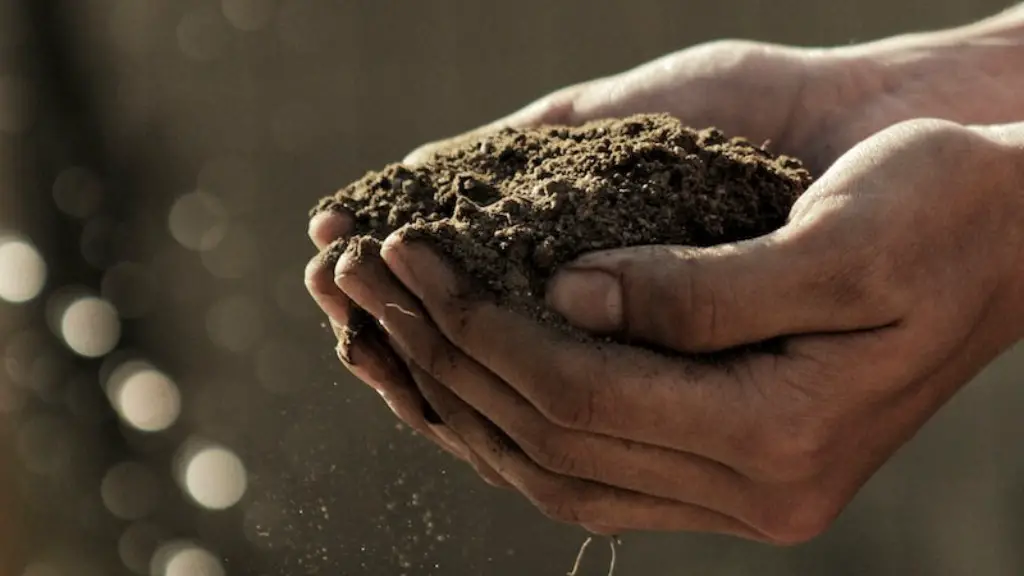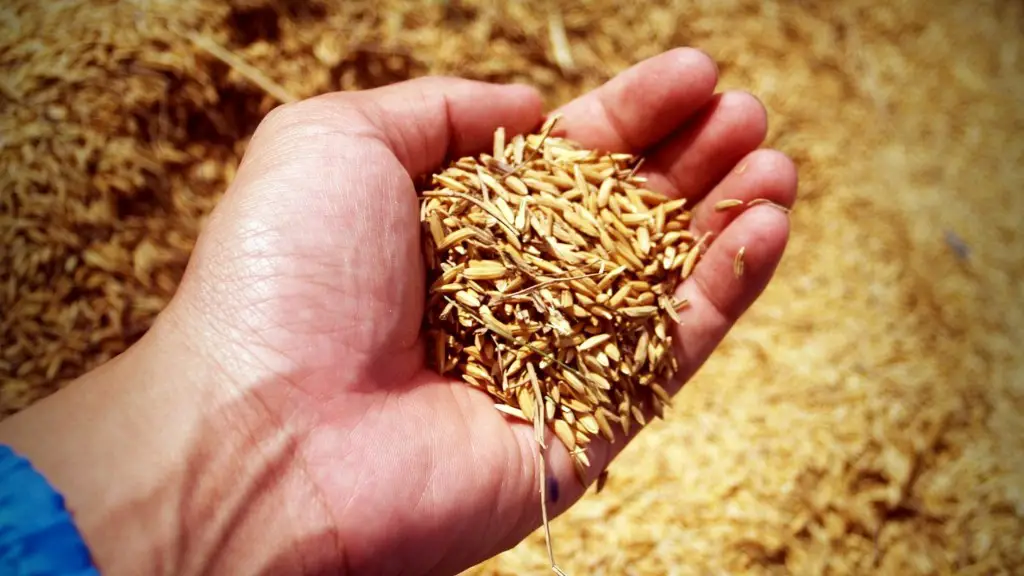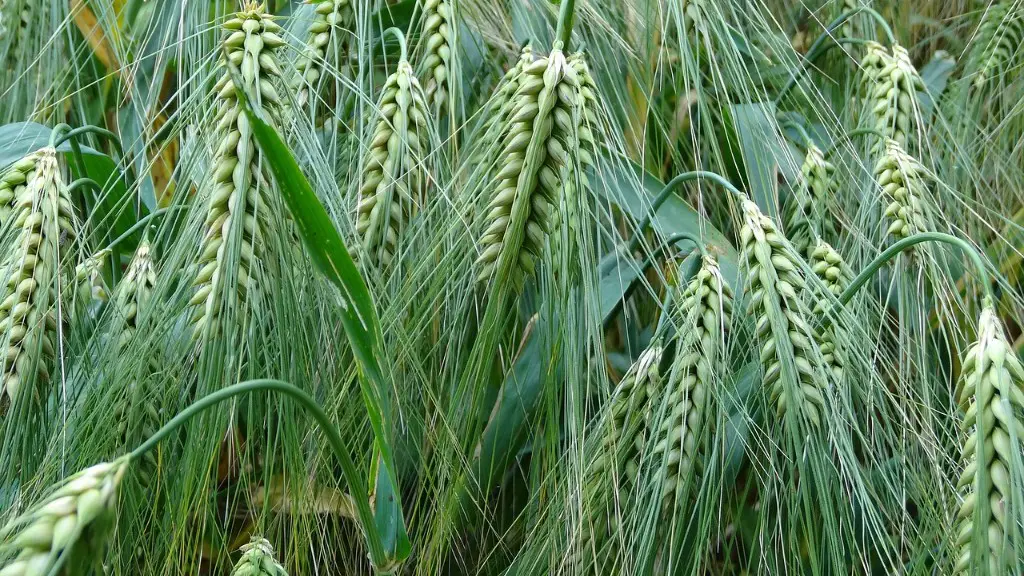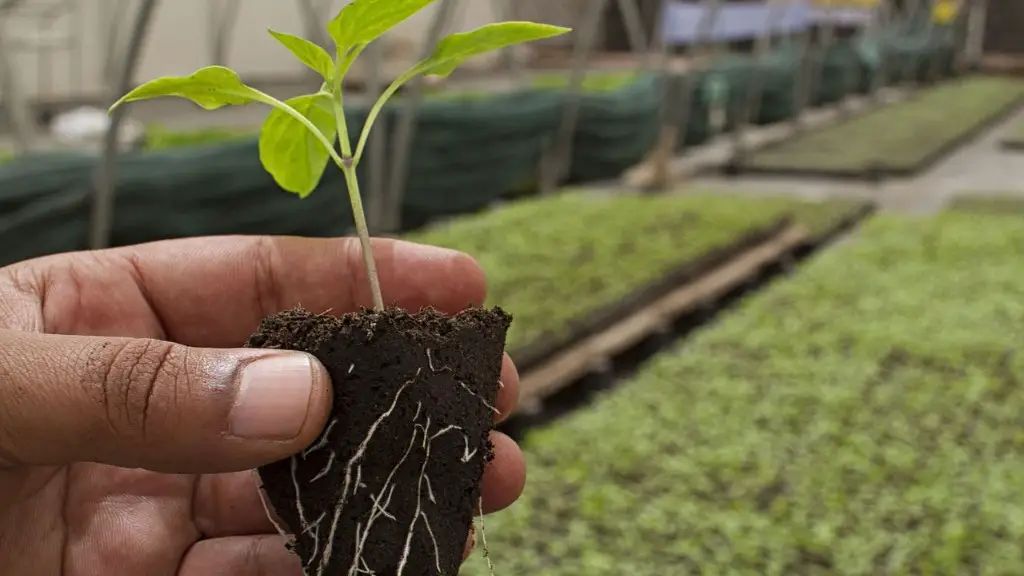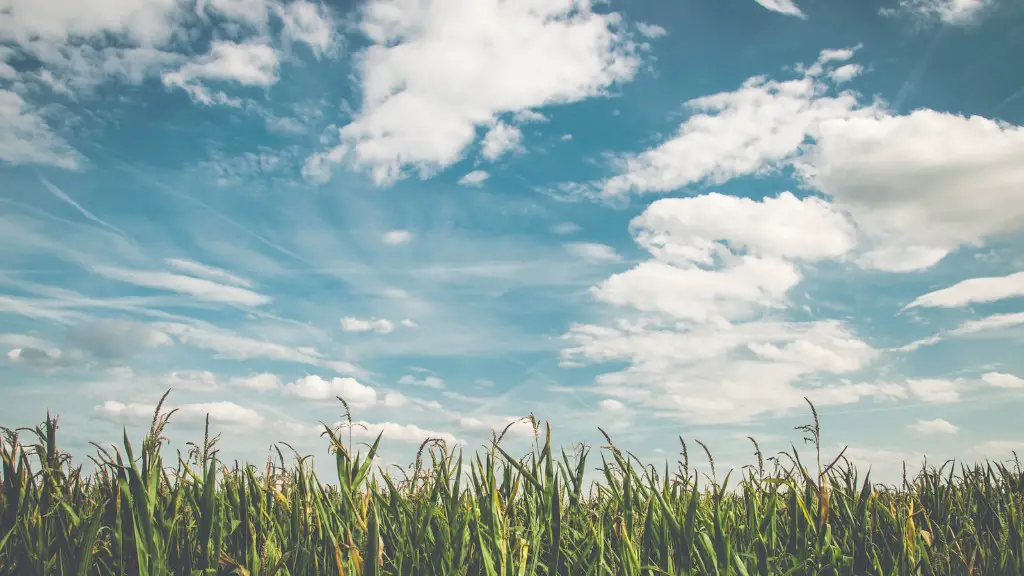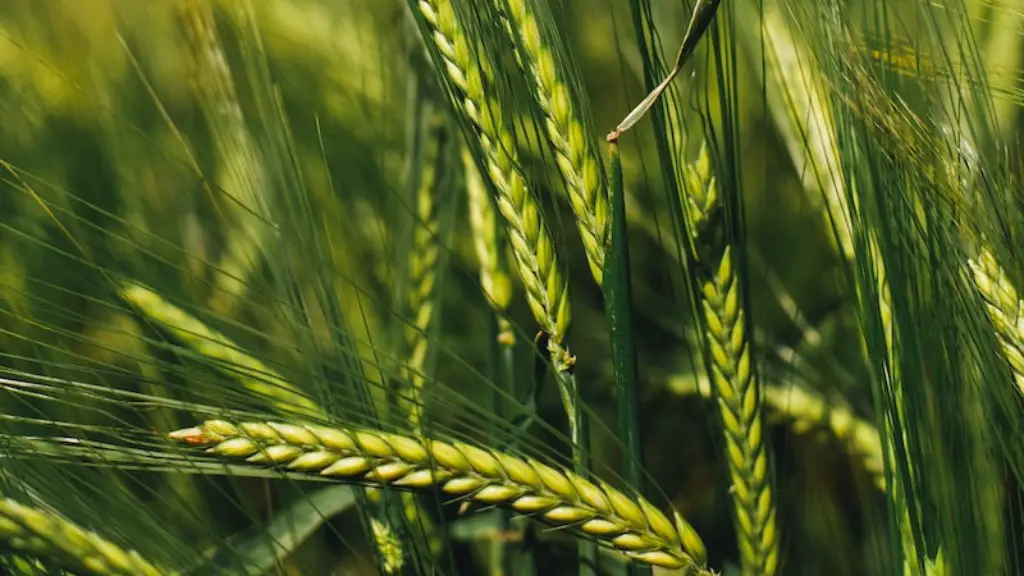Agriculture is a significant source of greenhouse gas emissions. The most important greenhouse gases emitted by agriculture are carbon dioxide (CO2), methane (CH4), and nitrous oxide (N2O). CO2 is emitted by livestock and agricultural soils, CH4 is emitted by livestock, and N2O is emitted by agricultural soils and fertilizer use.
The main greenhouse gas emitted through agriculture is methane. Methane is produced when organic materials decompose without oxygen, which is common in agricultural settings. Methane is also emitted from livestock, particularly through enteric fermentation – the digestion of food by bacteria in the animal’s gut.
Does agriculture produce the most greenhouse gases?
It is important to note that there is a large range in estimates of the percentage of greenhouse gas emissions that come from agriculture. The UN’s Food and Agriculture Organization (FAO) estimates that the sector is responsible for around 14.5 percent of global emissions, while other studies have found that it could be as high as 30 percent. However, most other studies put the figure closer to 15-20 percent. Therefore, it is clear that agriculture is a significant contributor to climate change, and that further action is needed to reduce emissions from this sector.
Agricultural greenhouse gas emissions come from a variety of sources, including livestock, rice cultivation, deforestation, and fertilizer use. In terms of livestock, enteric fermentation (belching and farting) and manure management are the main sources of methane emissions, while nitrous oxide emissions come from animal waste and fertilizer use.
Rice cultivation is a significant source of methane emissions, as water-logged conditions are necessary for the growth of this crop. Deforestation also contributes to greenhouse gas emissions, as trees play a role in sequestering carbon dioxide. When trees are cut down and burned, this carbon is released into the atmosphere, further contributing to the greenhouse effect.
Fertilizer use is another major source of agricultural greenhouse gas emissions. Nitrous oxide is emitted when nitrogen-based fertilizers are applied to soils. This gas is also a potent greenhouse gas, and its emissions have been on the rise in recent years.
The agricultural sector is responsible for a significant portion of greenhouse gas emissions. However, there are a number of ways to mitigate these emissions, such as planting trees, using more efficient fertilizer application methods, and reducing livestock numbers.
How much does agriculture contribute to greenhouse gas
Non-food agricultural products, such as cotton, wool, leather, rubber and biofuels, are not included in the estimate of agricultural emissions. However, they do provide a separate estimate which includes these products; this estimates that agricultural products as a whole contribute 33% to global emissions.
While agricultural practices can negatively impact the environment through pollution and degradation of soil, water, and air, they can also have positive effects. For example, crops and soils can trap greenhouse gases, and certain farming practices can mitigate flood risks.
How does agriculture lead to climate change?
Deforestation and changing land use is a major contributor to greenhouse gas emissions. Agriculture is often the reason for these changes, as forests are cleared to make way for farmland. This conversion of land releases the stored carbon dioxide (CO2) into the atmosphere, where it contributes to climate change. To help mitigate this, it is important to support sustainable agriculture practices that minimize deforestation and help store carbon in the land.
The livestock sector is a major contributor to greenhouse gas emissions, and factory farming is a major contributor to the livestock sector. Factory farming intensifies climate change by releasing vast volumes of greenhouse gases into the atmosphere.
Factory farming is not only contributing to climate change, but it is also contributing to other environmental problems, such as water pollution and soil erosion. Factory farming is an unsustainable and unnecessary practice that needs to be stopped in order to protect the planet and its inhabitants.
What are the 5 major consequences of agriculture?
The five environmental effects of agriculture are:
1. Soil fertility loss: This is caused by the removal of nutrients from the soil by crops, which can lead to soil degradation and ultimately decrease crop yields.
2. Eutrophication of water bodies: This occurs when agricultural runoff containing nutrients (e.g. Nitrogen and Phosphorus) enter water bodies, leading to an increase in algae growth. This can decrease the oxygen levels in the water, and negatively impact aquatic plants and animals.
3. Deforestation: This is often the result of land being cleared for agriculture, which can lead to loss of habitat and soil erosion.
4. Climate change: Agriculture can contribute to climate change through greenhouse gas emissions (e.g. methane from livestock), and by affecting land use patterns (e.g. through deforestation).
5. Pesticide pollution: Pesticides used in agriculture can pollute waterways and potentially harm human health and the environment.
While the development of agriculture in a region positively affects the natural life, oxygen production and climate in the region, inorganic nitrate pollution, pesticide pollution and salinity problems can be listed as the negative effects of agriculture on the environment, especially in regions where intensive agriculture is practised. In order to minimise the negative impacts of agriculture on the environment, it is important to use sustainable agricultural practices that protect and restore natural resources.
Is agriculture the biggest polluter
Agriculture is responsible for 70% of the world’s water use, making it the biggest polluter of water. This is due to the large amount of land used for agriculture, as well as the farming practices used. These practices include irrigation, which can lead to water pollution from nutrients and chemicals used on crops. In addition, livestock farming can pollute water with animal waste. The large amount of land used for agriculture also results in deforestation and habitat loss, which can have a negative impact on the environment and the wildlife that lives there.
Agricultural pollution is one of the leading environmental concerns today. It has many different sources, including nitrogen-based fertilizers, chemical pesticides, and livestock waste. These pollutants can have a number of harmful effects on the environment, including the production of greenhouse gases, water contamination, and the accumulation of toxins in our food supply.
What are at least 3 cons to our agricultural practices?
Animal cruelty is a major problem in the meat industry. Small businesses that rely on animal agriculture are often forced to adopt cruel practices in order to compete with the larger, more industrialized farms. This creates environmental concerns, as well as health problems for both the animals and the people who consume the meat. Low-quality food is another major concern with the meat industry.
Today, agriculture plays a primary role in air pollution. Smoke from slash and burn agriculture, and the production of silt, ash, and soil dust from activities like tillage, transporting, and harvest, contaminate the air with particulate matter. In addition, agricultural production often involves the use of pesticides and fertilizers, which can release harmful chemicals into the air. Agricultural air pollution is a serious problem that needs to be addressed in order to protect the health of both farmers and the general public.
What is the biggest problem in agriculture
There are many problems that farmers face in today’s world. They must deal with climate change, soil erosion, and biodiversity loss. They must also satisfy consumers’ changing tastes and expectations, and meet rising demand for more food of higher quality. Additionally, farmers must invest in farm productivity, adopt and learn new technologies, and stay resilient against global economic factors.
It is estimated that by 2050, the world will have to produce 70% more food than it does today in order to feed the ever-growing population. However, the amount of agricultural land is decreasing as cities and towns continue to expand. In addition, the variety of crops and livestock produced is also declining due to the loss of biodiversity.
These two problems are interconnected and need to be addressed in order to ensure that the world will be able to meet the food demands of the future. One way to do this is to create more efficient agricultural systems that make use of the available land and produce a greater variety of food. Another way is to promote policies that encourage the protection of agricultural land and the conservation of biodiversity.
Why does agriculture produce so much CO2?
Carbon dioxide is a greenhouse gas that is released into the atmosphere when farm equipment is used. Tilling, planting, applying pesticides and fertilizers, and harvesting all contribute to carbon dioxide emissions. The more passes across the farm field, the more carbon that is emitted. Farm equipment is a major source of greenhouse gas emissions in the agricultural sector.
Bananas are the world’s most wasted crop, but this Uganda company is creating ways for change.
This Uganda company is innovating new ways to reduce waste and create value from bananas. By creating new products from banana waste, this company is not only reducing environmental impact, but also creating new revenue streams. This is a great example of how sustainability efforts can be financially successful. We can all learn from this company’s example and work to reduce waste in our own lives.
Why is agriculture the biggest mistake
Farming allowed for the domestication of plants and animals, which led to the development of civilizations. However, this also led to the rise of deep class divisions, as those who controlled the food sources had power over those who did not. Hunter-gatherers, who did not have access to these concentrated food sources, were at a disadvantage. This led to malnutrition, starvation, and epidemic diseases, as well as social inequality.
Agriculture plays a significant role in climate change. It is one of the main sources of greenhouse gas emissions, particularly methane and nitrous oxide. Methane is released from animals, while nitrous oxide is emitted from soil as a result of agricultural activities. Both of these gases are powerful greenhouse gases that contribute to global warming.
Agriculture also has a significant impact on land use and land cover. Deforestation, for example, results in the loss of trees that act as a sink for carbon dioxide, one of the main greenhouse gases. In addition, the conversion of natural landscapes to agricultural land results in the release of greenhouse gases and the loss of carbon sinks.
The impact of agriculture on climate change is an important issue that needs to be addressed. Agricultural practices need to be improved in order to reduce emissions of greenhouse gases, and to promote the use of sustainable land management practices.
Conclusion
Greenhouse gases are emitted during agricultural activities through animal husbandry, fertilizer use, and rice cultivation. Animal husbandry produces methane gas, which is a potent greenhouse gas, while fertilizer use and rice cultivation release nitrous oxide gas, another potent greenhouse gas.
Greenhouse gases like carbon dioxide and methane are released into the atmosphere when farming activities like tilling the soil and raising livestock occur. The gases trap heat in the atmosphere and contribute to climate change. Agriculture is a leading cause of greenhouse gas emissions, and it is important to take steps to reduce these emissions in order to combat climate change.
